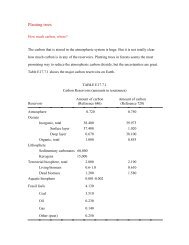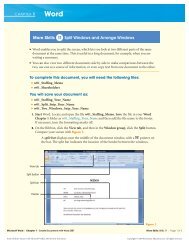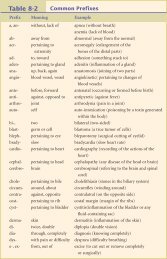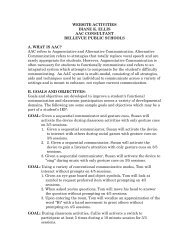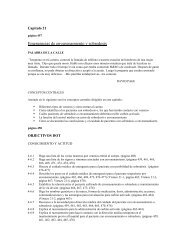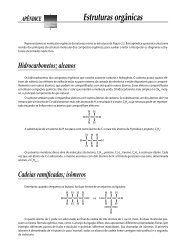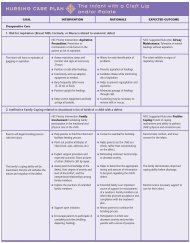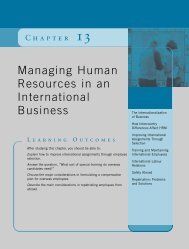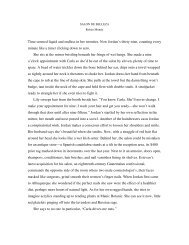19.1 Payoff Tables and Decision Trees
19.1 Payoff Tables and Decision Trees
19.1 Payoff Tables and Decision Trees
Create successful ePaper yourself
Turn your PDF publications into a flip-book with our unique Google optimized e-Paper software.
Problems for Section 19.4<br />
Summary 25<br />
The risk seeker’s curve represents the utility of someone who enjoys taking risks. The<br />
utility is greater for large dollar amounts. This curve represents an individual who is interested<br />
only in “striking it rich” <strong>and</strong> is willing to take large risks for the opportunity of making<br />
large profits.<br />
The risk-neutral curve represents the expected monetary value approach. Each additional<br />
dollar of profit has the same value as the previous dollar.<br />
After a utility curve is developed in a specific situation, you convert the dollar amounts to<br />
utilities. Then you compute the utility of each alternative course of action <strong>and</strong> apply the decision<br />
criteria of expected utility value, expected opportunity loss, <strong>and</strong> return-to-risk ratio to<br />
make a decision.<br />
APPLYING THE CONCEPTS<br />
19.23 Do you consider yourself a risk seeker, a risk<br />
averter, or a risk-neutral person? Explain.<br />
THINK ABOUT THIS Risky Business<br />
When you make investment decisions, you need<br />
to think about your own personal tolerance for<br />
risk. When given the chance to make large sums<br />
of money, some people can shrug off a 20%<br />
loss, while others feel ruined when they lose<br />
even a small amount such as $20. What about<br />
you? Are you willing to risk losing a lot of money<br />
for a chance to strike it rich? Or are you more<br />
comfortable with a less risky scenario, even<br />
though your chance to strike it rich will be<br />
smaller?<br />
How can you identify stocks, mutual funds,<br />
or other types of investments that fit your own<br />
personal tolerance for risk? One way to begin is<br />
to examine the st<strong>and</strong>ard deviation of the investments<br />
you are considering during recent periods<br />
of time. You will also want to assess your own<br />
willingness to tolerate different losses. What<br />
would you do if you lost 10%, 30%, 50%, or 90%<br />
of your investment? Would you sell? Would you<br />
buy more in the hope that the investment would<br />
go back up? Also, think about what you would do<br />
19.24 Refer to Problems 19.3–19.5 <strong>and</strong> <strong>19.1</strong>2–<strong>19.1</strong>4,<br />
respectively. In which problems do you think the expected<br />
monetary value (risk-neutral) criterion is inappropriate?<br />
Why?<br />
if your investment went up 10%, 50%, 100%, or<br />
200%. Would you sell the entire investment? Part<br />
of the investment? Or would you buy more? You<br />
might want to think about the volatility of your<br />
investments—that is, any patterns of extreme<br />
increases <strong>and</strong> decreases in the value over short<br />
periods of time—that can add to the risk.<br />
Everyone is different, but knowing how you<br />
would answer these questions before you are<br />
faced with making a decision will help you make<br />
better investment decisions.<br />
USING STATISTICS @ The Reliable Fund Revisited<br />
SUMMARY<br />
In this chapter, you learned how to develop payoff tables <strong>and</strong><br />
decision trees, to use various criteria to choose between<br />
In the Using Statistics scenario, you learned how the manager of The<br />
Reliable Fund could use various decision-making criteria to decide<br />
whether to purchase stock A or stock B. You also saw how sample<br />
information could be used to revise probabilities <strong>and</strong> possibly change<br />
the decision reached. You found that stock B had a higher expected monetary<br />
value, a lower expected opportunity loss, but a lower return-to-risk ratio.<br />
alternative courses of action, <strong>and</strong> to revise probabilities,<br />
using Bayes’ theorem, in light of sample information.




